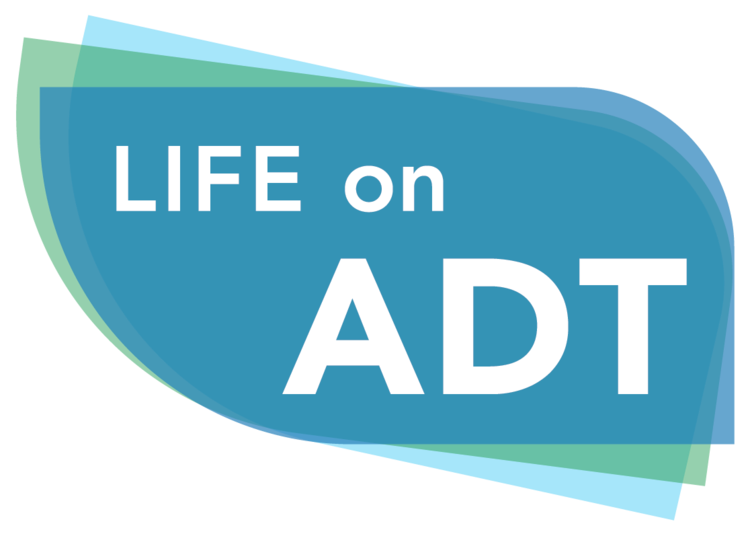There is a new study out examining the potential benefits of physical exercise for men on ADT. In this study the researchers looked specifically at biomarkers in the blood, such as lipids and glucose, that can forewarn of diabetes and cardiovascular disease. They also looked at bone mineral density because ADT has been associated with increased risk of osteoporosis.
In terms of full disclosure, the paper has many authors who are our colleagues in both Calgary and Toronto. Two of them are contributing authors to the ADT book.
For this study, the exercise intervention involved both aerobic and resistance training. Participants were randomly assigned to one of three groups: they had a personal trainer, exercised in a group, or had a home-based exercise program.
For all participants, the goal was 150 minutes a week of physical activity (as recommended in the ADT book). The target intensity for each participant was 60 to 70% of their maximum heart rate. Also, the participants were told to aim for moderately intense exercise (i.e., a 3 to 6 rating on a 1-10 perceived intensity scale). That is to say, the goal was moderate but not high intensity exercise.
What is surprising about this study is that the results were largely non-significant. At the six month mark, there were no significant differences between the three groups nor were there any significant differences in the blood markers for diabetic or cardiovascular risk. Furthermore, there were no changes in bone mineral density.
So why the lack of significant results?
This was a tiny study with only 48 men. Thus, the sample size was probably too small to pick up anything significant. Secondly, the exercise program was probably not intense enough. Exercising in the 3 to 6 range on a 10-point intensity scale is not "moderate to intense", but just "moderate". That pretty well matches activities of daily living where one has a flight or two of stairs to walk a few times a day, and a bit of getting out and about (i.e., walking the dog, shopping, unloading the groceries, etc.).
We would love to see this study continued with a larger sample size and slightly more intense exercise. Activities that are comparable to just walking the dog twice a day may not be intense enough to fight off some of the more serious side effects of ADT. The authors do not make any recommendations about what would be a better exercise program than what they investigated. But we suggest that, in addition to walking the dog, one might try jogging with the dog as well. It will probably be good for both you and the dog.
It is a good idea to check with your healthcare provider before starting any new exercise programs or activities.
To read the full article, see: https://www.geriatriconcology.net/article/S1879-4068(19)30378-9/fulltext
Papadopoulos, E., Mina, D.S., Culos-Reed, N., Durbano, S., Ritvo, P., Sabiston, C.M., Krahn, M., Tomlinson, G., O’Neill, M., Iqbal, A., Timilshina, N., Matthew, A., Warde, P., & Alibhai, S.M.H. (2020). Effects of six months of aerobic and resistance training on metabolic markers and bone mineral density in older men on androgen deprivation therapy for prostate cancer. Journal of Geriatric Oncology, pii: S1879-4068(19)30378-9. Advance Online Publication. doi: 10.1016/j.jgo.2020.02.013
